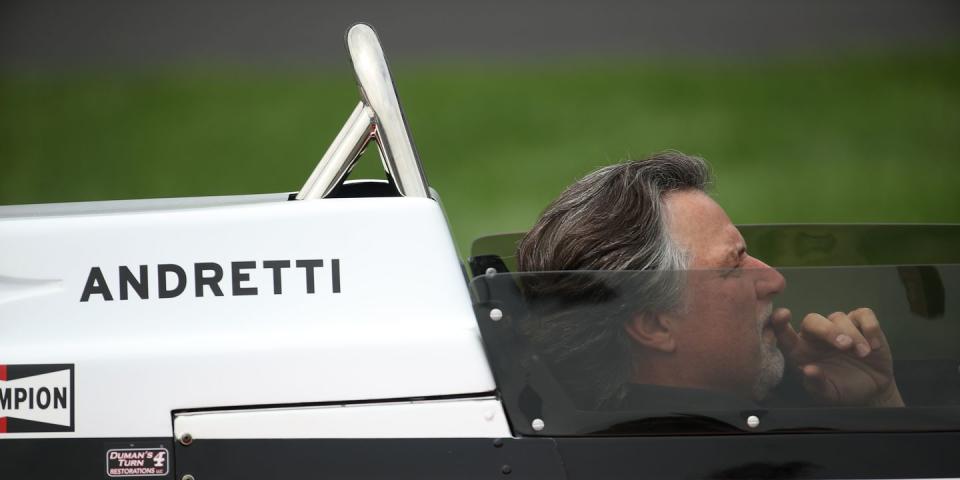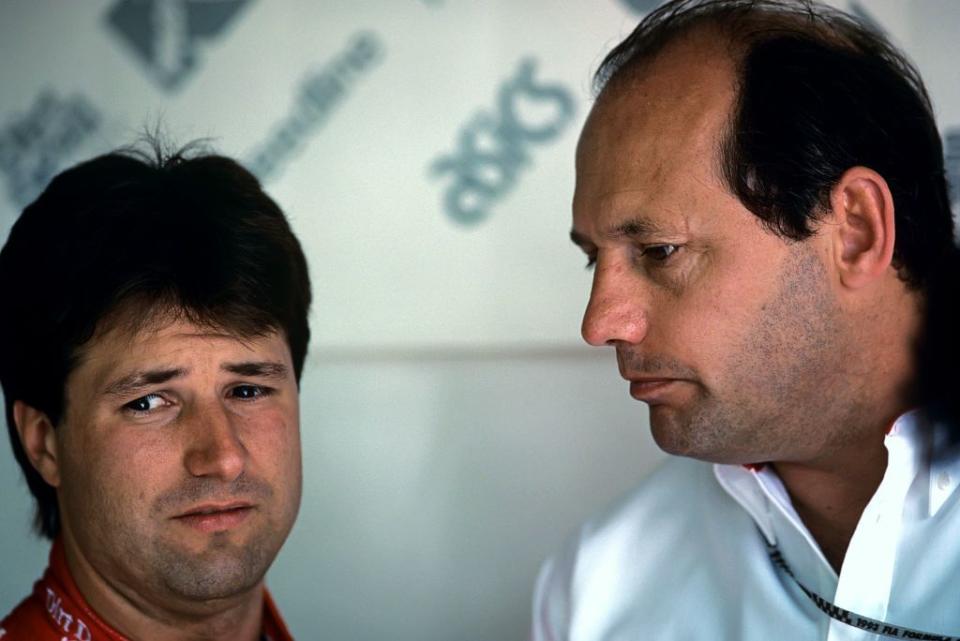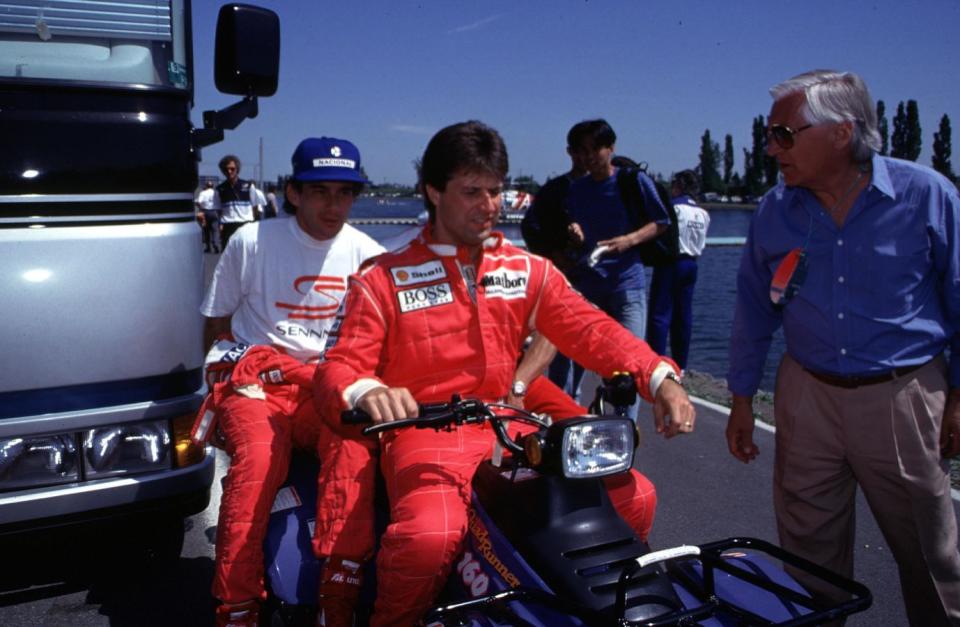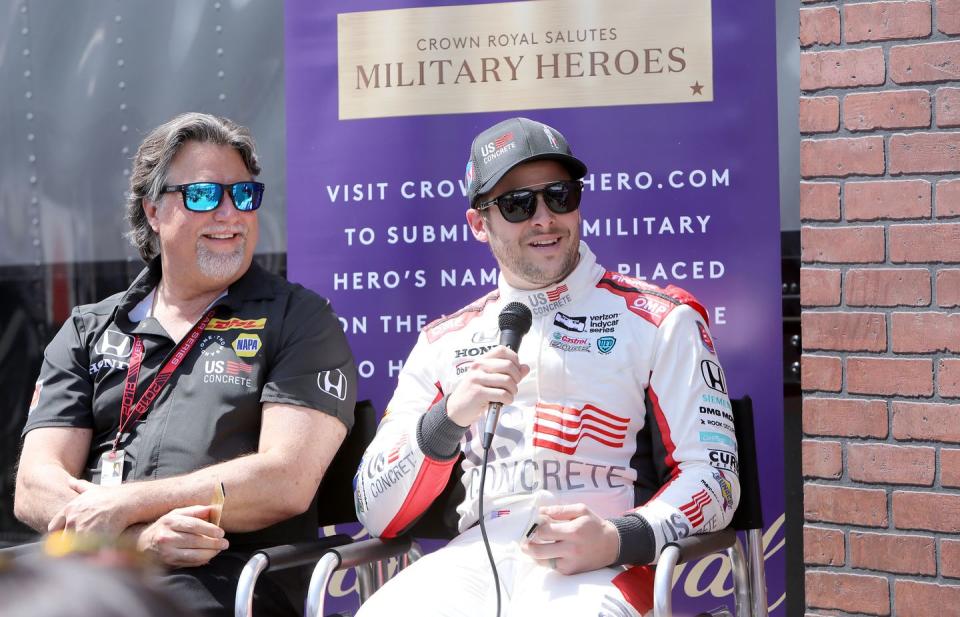Why Michael Andretti May Be Searching for F1 Redemption

In 1993, Michael Andretti left Indy car racing to drive in Formula 1 with McLaren, with many judging his single season in the series falling well short of expectations.
Andretti served as second driver behind three-time world champion Ayrton Senna, who he later described as his only ally at McLaren.
Andretti’s bid to return to F1 may offer some redemption to the now-team owner from his failures in the series as a driver.
It’s a really big year for Formula 1 fans in the United States, right?
There’ll be a giant party of an F1 race under the lights of Las Vegas, following the smashing debut of the Miami Grand Prix last season, making for three U.S. grands prix. Florida-native Logan Sargeant, the 22-year-old former FIA world karting champion and Formula 2 rookie of the year, joins the struggling but ever-optimistic Williams team as second driver. And team owner Michael Andretti, now in partnership with GM’s Cadillac division, is hustling harder than ever to acquire ownership of an F1 team.
Amidst this fanfare and excitement, it’s worth noting that 2023 also marks 30 years since the season old timers consider the last really really big year for F1 fans in the United States: The year driver Michael Andretti—fast, experienced, and at his athletic peak—went off to race for one of the best F1 teams of the early 1990s.
That did not turn out so well. Conventional racing wisdom says Andretti’s season at McLaren was a bust, and 30 years later it’s hard to spin it any other way. The standard take also suggests that failure rested almost entirely on Andretti’s shoulders—maybe, even, that he was simply not good enough to cut it. In retrospect, it’s clear there was more than enough blame to spread around. The positive spin would say Andretti’s timing was simply horrible.
It was September 1992, during the Italian Grand Prix weekend at Monza, when McLaren announced that Andretti would join three-time world champion Ayrton Senna for 1993. Andretti was fresh off a series-high five wins in the CART PPG World Series, and one of the most dominant drives ever in the Indianapolis 500 (which, unfortunately for him, ended with a failed fuel pump after leading 160 laps and lapping the field to third place). Finally, long suffering F1 fans in the States had something to be excited about. For the first time since the late 1970s, when Andretti’s father Mario raced and won for Lotus, there was American-bred talent driving for a team that was capable of winning F1 races.
Unfortunately, the ’93 season began inauspiciously for McLaren, more so for Andretti, and it mostly got worse. Longtime engine supplier Honda left F1 that year, and the team was forced to use Ford-Cosworth customer engines. The car was delayed, and finally ready with only enough time for Andretti to complete two short days of preseason testing. Maybe worse, the FIA instituted new rules for race weekends, limiting drivers to 23 laps in free practice and 12 in qualifying—at tracks that by and large Andretti had never seen.

At the season-opening in the South African Grand Prix at Kyalami in April, Andretti qualified ninth, seven spots behind teammate Senna. His car did not get off the grid for the formation laps thanks to a malfunctioning clutch. He DNF’d the first four races—sometimes his doing, sometimes the car’s—and seven of his 13 starts. The weight he’d borne being Mario’s son in the States was like a hydraulic press in Europe. He didn’t score points until the French Grand Prix in July and didn’t reach the podium until Monza, with three races to go. It was there, nearly one year to the day after McLaren announced Andretti’s signing, that team boss Ron Dennis said he and Andretti had agreed to part ways. Test driver Mika Hakkinen, much less expensive than Andretti, would finish the season in the second McLaren.
The positive spin on Andretti’s brief foray into Formula 1? He scored points in half of the six races he actually finished, and on several occasions qualified within a whisker of Senna, at tracks where Andretti had run a relative handful of laps.
The most frequently cited factor in Andretti’s failure at McLaren, then and now, is his unwillingness to move from his home in eastern Pennsylvania and set up a base near McLaren in the UK. Instead, he chose to commute back and forth across the Atlantic. Then, as now, Andretti called the wouldn’t-relocate hypothesis “absolute b---s----.”
“People who said that have no clue, or have some problem with me and didn’t want me to do well,” he told Autoweek years later, shortly before he retired as a driver. “Maybe I would now because my kids are older, but not living there had nothing to do with my performance.”
Certainly, he missed in-season tests that allowed his eventual replacement, Hakkinen, to establish rapport with the team? Not according to Michael.

“Ron hired Mika because he didn’t think he was going to get Ayrton back, then he did, and now he’s got three drivers on his payroll,” Andretti said. “So he makes Mika the test driver and cuts my testing in half. When I did get to test, Mika was never, ever, ever faster than me. Not once.”
In retrospect, the take that has evolved most over 30 years relates to how good Andretti actual was—especially for a driver with no experience in Europe. The 1993 season was clearly the start of an extended period of decline for the team. It was strapped for cash and support, with the departure of Honda. Yes, Senna won five races that year, and that’s no small feat in any context. Yet we’re talking about a driver that some large chunk of fandom considers the greatest, fastest racer ever, driving for the team where he grew up as a racer and won his three world championships. What Senna accomplished in 1993 was largely a function of muscle memory and his vaunted will.
Compared to Senna’s five wins, Williams collected 10, including seven for Senna’s archrival Alain Prost. Prost led the championship from South Africa onward. Two of Senna’s wins came after Prost had already clinched his fifth world championship. Prost had 13 of 16 pole positions in 1993, while Senna (to many, the greatest qualifier in F1 history) had one. McLaren had neither the car not the team the world assumed it had in 1993.
Senna had seen the writing on the wall after ’92, when he won just three races and one pole, and shopped his services through the off-season. He didn’t commit to McLaren until the weekend of the opener at Kyalami and then on a race-by-race basis. When Prost retired after 1993, Senna bolted for Williams, and unfortunately to his demise. He was killed in an accident at Imola early in the third race of the ’94 season. McLaren—and Hakkinen—would not win another race for four years after Senna’s departure.

Some who understood the challenges Andretti faced at McLaren urged him to take a spot at a lesser F1 team and press on. Never one for the back of the grid, Andretti couldn’t get out of Europe fast enough. He took a seat that off-season with upstart Ganassi Racing in CART and made a statement at the ’94 opener in Australia. Andretti passed pole winner Nigel Mansell on the first lap in a wet start then led every lap of the race, delivering Ganassi’s first Indy car win and the first for the Reynard chassis.
Andretti raced nine seasons in CART after he returned from F1, and he was legitimately as competitive his final year as he’d been in his prime. Indeed, he won at least one race every year, including the Long Beach Grand Prix in 2002—his last full season in an Indy car. When he retired, his 42 victories ranked third all-time in Indy car history, behind his father Mario (52) and A.J. Foyt (67). He has since built one of the broader, more successful motorsports enterprises in the United States, with 11 championships across multiple series and five Indianapolis 500 wins. Now, of course, he hopes to take ownership success back to F1.

It’s worth noting that, after his abbreviated season in F1, Andretti never won another championship as a driver. Before he left for McLaren, it was widely assumed there would be more.
Free from the huge shadow of his famous father, doing something other than what the world expected him to do, Michael Andretti seems happier as a team owner than he was as a driver. We’re sure he remains a sometimes intense, keenly competitive individual, and it’s reasonable to think that his F1 debacle can occasionally rankle him to this day. Ironically, maybe, given Senna’s reputation as a cutthroat competitor, Andretti called him “my only ally at McLaren.”
“Ayrton was the only person who ever expressed any of the difficulties I faced to the press,” he told Autoweek in 1999. “He knew my pace in testing. We got along very well. I think our friendship would have grown further had things not turned out the way they did.
“It’s easy to what-if that year, but that’s a fool’s game. You have to take those experiences and grow with them. In that sense it was priceless, because I learned so much about life, and myself. Was it good for my career? Probably not, but it was good for me.”

Think maybe his season with Senna in 1993 underpins Andretti’s motivation to return to F1 as a team owner? Share your thoughts in the comments below.

 Yahoo Autos
Yahoo Autos 